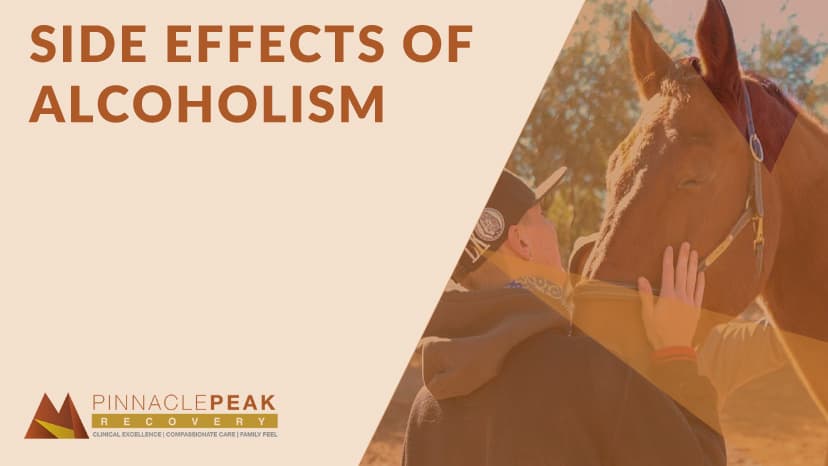I hate the grocery checkout line. Not because it’s long. Not because I’m tired at the end of the day and want to get home as soon as possible. It’s because I can’t bring myself to make eye contact with the high-school-aged cashier that will scan can after can and bottle after bottle of beer and liquor in my grocery cart.
I’ll be sure to make a quick comment about a party I’m planning to host. But I’ll know the truth. The truth is every ounce of alcohol in that grocery cart is all for me. Maybe it’s not all for tonight, but it will all be gone soon enough. And then I’ll be back to this grocery line. Repeating this cycle. Again and again and again.
I go to the grocery store because it’s not the liquor store. And if I’m not buying can after can and bottle after bottle of beer and liquor at a liquor store, I can tell myself the lie that my alcohol use is social, manageable, and contained. That I can quit alcohol anytime I want.
My body has been telling me a different story for a long time. I am irritable as I wait impatiently to get my next drink. I am not sleeping well. It is hard to concentrate at work after a night of drinking.
It is especially hard for my family to be around me. It’s hard for me to be around me. I need change. I need help to change. I am scared. I don’t want to be judged. I don’t want to be alone. If I keep going on this same road, I’ll only have the cans and bottles left to keep me company. I want more for myself. I want more for my family. I hope change is possible for someone like me.
How It All Began
I started driving to an addiction treatment facility I found on Google. While driving there, I pulled into a gas station to get gas. Later, I pulled into another gas station to add air to my tires. Then to round out my avoidance, I went through a car wash. All to avoid facing the music that is getting addiction treatment. I am nervous. I don’t know if I’ll be able to handle being sober … I don’t know me sober.
When I got to the treatment facility, the addiction counselor asked me when the first time I drank was. “Hmm…” I thought. “I must have been 12? Maybe 11? It is hard for me to remember.” All I remember is my dad pulled up a chair and said, “Charlie, it’s time to be a man.” To my dad, manhood looked like beer and never backing down from a fight. This is not the manhood I want to pass down to my children and grandchildren today.
Defining Alcohol
According to the “Essentials of Abnormal Psychology” 8th edition textbook by Mark Durand, David Barlow, and Stefan Hofmann, alcohol is the result of the fermentation of yeasts, sugar, and water. Alcohol is the most commonly used and misused depressant. Depressants are a category of substances that result in behavioral sedation (calming) and can cause relaxation.
Depressants decrease central nervous system activity. Examples of depressants include alcohol and the sedative (calming) and hypnotic (sleep-causing) drugs such as barbiturates (for example, Seconal) and benzodiazepines (for example, Valium, Xanax, and Ativan).
What Is Alcoholism?
My alcoholism is different from my dad’s. When I am deep in drinking, I get quiet. I shut down. I go inward. I want to be alone. I am ashamed.
For my dad, his alcoholism was loud and at times violent. It looked like trying to punch us but missing and instead hitting the wall. I look back and think my dad was really throwing all those punches at himself. At the core of him, he was a man that was sad and hurting.
According to the “Experience Psychology, Fourth Edition” textbook by Laura A. King, alcoholism, also known as alcohol use disorder, “is a disorder that involves long-term, repeated, uncontrolled, compulsive, and excessive use of alcoholic beverages.” This excessive drinking leads to damaged health and weakened social relationships.
Side Effects of Alcohol Use
I take my alcohol in a coffee cup. All day, every day. There’s always booze in there, but I optimistically thought it may look like I’m just drinking a regular cup of coffee to the observer’s eye. After a few “coffee cups,” everything gets a little blurry. The world around me starts to slow, everything feels tiring. I know I’ll eventually end up asleep in the recliner. I may reach for the newspaper on the kitchen table and knock over the napkin holder on the way to it. I try to rise up from my chair slowly because I’m wobbly.
The sad part is I always thought my kids didn’t notice I was drinking from that coffee cup when they were growing up. I convinced myself that maybe they thought it was just coffee all this time. But they knew. My kids carry those mornings when Dad “wasn’t Dad” around with them today.
I want to be a better grandpa to my grandkids. I want my kids to think I am capable of taking care of their kids. I want to throw that coffee cup away if I can make it through this treatment program … I don’t want to need it anymore.
“Essentials of Abnormal Psychology” states that stimulation is the first effect felt when drinking alcohol. In general, there is a feeling of well-being, reduced inhibitions (self-restraint), and people become more outgoing. Why is this? The restraining centers in the brain are depressed or slowed at the beginning of alcohol use. With ongoing drinking, alcohol depresses other areas of the brain, which disrupts our ability to function properly.
When drunk, we may show the following effects:
- Impaired motor coordination
- Staggering
- Slurred speech
- Slowed reaction time
- Become confused
- Lack good judgment
- Vision and hearing can be negatively impacted
Alcohol affects several parts of the body. As alcohol is ingested, it passes through the esophagus and into the stomach. In the stomach, a small amount of alcohol is absorbed. From the stomach, alcohol travels to the small intestine, where it is easily absorbed into the bloodstream. The circulatory system disperses alcohol throughout the body.
Alcohol has contact with every major organ, including the heart. Some alcohol goes to the lungs, where it vaporizes and is exhaled. This is the basis for the breathalyzer test that measures levels of alcohol intoxication (drunkenness). Alcohol passes through the liver and is then broken down or metabolized into carbon dioxide and water by enzymes.
How Common Is Alcohol Use in Arizona?
According to the Behavioral Health Barometer, Arizona, Volume 6, from the years 2017-2019, the annual average prevalence of past-year alcohol use disorder in Arizona was 4.7% or representative of 279,000 people ages 12 and older. The annual prevalence of past-year alcohol use disorder in Arizona for young adults 18-25 years old was 9.5% or representative of 72,000 people.
What Is Alcohol Use Disorder?
“Alcohol use disorder?” I asked the counselor at the treatment facility. I had never heard of it before. My counselor explained that alcohol use disorder is a type of substance use disorder. My counselor shared that simply put, substance use disorders include a bunch of symptoms that show a person is having problems that are a result of using a substance or substances. Without using that substance or substances, this person would likely not have the same challenges.
To further explain alcohol use disorder, my counselor showed me all of the possible symptoms that make up the disorder. I felt a twinge of shame and guilt as we went through many of the symptoms, and all I could think was “Check,” “Yep,” and “That’s me alright.” The counselor explained that right now, my alcohol use disorder is considered to be “severe” as I have seven of the listed symptoms.
The counselor said progress for me would be having less symptoms over time. This could be going from “moderate,” which is having four to five symptoms, down to “mild,” which is two to three symptoms, to eventually having no symptoms at all. The counselor said this change is possible over time.
The “Diagnostic and Statistical Manual of Mental Disorders, Fifth Edition” (DSM-5) is a manual mental health and medical professionals use to assess and diagnose mental health disorders. According to DSM-5, published by the American Psychiatric Association, the following criteria are used to determine if someone has alcohol use disorder (AUD):
- A problematic pattern of alcohol use as shown by at least two of the following symptoms within a one-year period of time:
- Alcohol is often taken in larger amounts or over a longer period than was planned.
- There is a constant desire or unsuccessful efforts to cut down or control alcohol use.
- Much time is spent in activities necessary to obtain alcohol, use alcohol, or recover from its effects.
- There is a craving or strong desire to use alcohol.
- There is a failure to fulfill major role obligations at work, school, or home due to alcohol use.
- There are social or interpersonal issues that are caused or worsened by alcohol use
- Significant social activities, work, or hobbies are given up or done less often due to alcohol use.
- Alcohol use continues in situations in which physical harm could occur.
- There is an understanding of the physical or psychological problems that are caused or worsened by alcohol use, but the alcohol use continues.
- There is an increase in tolerance.
- Tolerance includes the desire to increase alcohol use to satisfy a craving.
- The same amount of alcohol has less of an effect over time.
- There are alcohol withdrawal symptoms.
- The drinker may engage in alcohol use again to lessen or avoid having withdrawal symptoms.
Risk Factors for Developing Alcohol Use Disorder
According to DSM-5, there are environmental and biological risk factors that make people more likely to develop alcohol use disorder.
- Environmental risk factors
- Social and cultural attitudes toward drinking and intoxication
- Availability and price of alcohol
- Number and frequency of peers engaging in alcohol use
- Overestimating the positive outcomes of alcohol use
- Poor ways of coping with stress
- Biological risk factors
- Alcohol use disorder runs in families
- You are more at risk for developing alcohol use disorder if you have close relatives that meet the criteria for alcohol use disorder.
- Having other preexisting mental health disorders such as schizophrenia or bipolar disorder
- High levels of impulsivity or behaving recklessly
- In general, high levels of impulsivity are associated with an earlier onset and more severe alcohol use disorder.
- Low sensitivity to alcohol.
- Alcohol use disorder runs in families
Side Effects of Alcoholism/Alcohol Use Disorder
Per DSM-5, alcohol use disorder affects major areas of life functioning, including:
- Driving and operating machinery
- Increase in the risk of accidents
- School
- Low academic performance
- Work
- Absenteeism from work
- Job-related accidents
- Low employee productivity
- Interpersonal relationships and communication
- Increase in violence
- Feelings of sadness, irritability
- Health
- Higher suicide risk
Long-Term Health Side Effects of Alcohol Use Disorder
According to the Centers for Disease Control and Prevention (CDC), excessive alcohol use can cause chronic diseases and other serious health conditions, such as:
- Alcohol use disorder (AUD), or physical alcohol dependence
- Gastrointestinal problems
- Heart disease, high blood pressure, and related cardiovascular issues
- Cancer of the breast, mouth, throat, rectum, liver, colon, esophagus, and voice box
- A general weakening of the immune system
- Problems with learning and memory, including an increased risk for dementia
- Increased risk of anxiety and depression
- Social problems, including with employment, family, or schooling
Alcohol Withdrawal Symptoms
I felt the sickest I have ever felt in my life at the treatment facility while getting my first intake assessment with the counselor. At first I was doing OK, just sweating a little bit. Then, I started to feel really, really sick.
The counselor was prompt in gathering my information and ensuring I was able to be assessed by medical professionals quickly. The counselor explained that people withdrawing from alcohol are at a higher risk for seizures and wanted to ensure I was being taken care of promptly.
Per “Essentials of Abnormal Psychology,” the long-term effects of heavy drinking are often severe. Withdrawal from chronic alcohol use may include hand tremors, and within several hours, nausea or vomiting, anxiety, transient hallucinations (seeing or hearing things that aren’t real), agitation, and insomnia (sleeplessness). An extreme withdrawal symptom is withdrawal delirium. Withdrawal delirium or delirium tremens (DTs) includes hallucinations and body tremors that occur as a result of a heavy drinker withdrawing from alcohol. Delirium tremens is a medical emergency that requires immediate treatment.
Alcohol Use Disorder Treatment at Pinnacle Peak Recovery
At Pinnacle Peak Recovery, we believe recovery from alcohol use disorder is possible, and we are here to support you along your journey to recovery. To begin, there is a treatment center admissions process that includes an experienced team of highly skilled professionals with 24/7 availability that will assess you and determine the best individualized treatment plan to meet your unique needs.
There are several levels of rehab for alcoholism available at Pinnacle Peak Recovery, including:
- Inpatient treatment
- Safe, medical detox
- Rehab
- Dual diagnosis treatment
- Treatment goals are focused on better managing both your substance use disorder(s) and co-occurring mental health disorder(s).
- Types of therapy offered:
- Cognitive behavioral therapy
- Dialectical behavior therapy
- Individual therapy
- Experiential therapy
- Dual diagnosis treatment
- Outpatient treatment
- Partial hospitalization program (PHP)
- Length of care is approximately 45 days.
- Clients have the option to return to their homes at night or can live at a sober living home that is close to the PHP.
- Intensive outpatient program (IOP)
- Program occurs three evenings/week for 60 days.
- Partial hospitalization program (PHP)
Contact Pinnacle Peak Recovery Today
Please contact Pinnacle Peak Recovery at (866) 377-4761 today to begin your journey toward recovery. We are here to help.
FAQs
What are the side effects of being an alcoholic?
The side effects of misusing alcohol over time include, but are not limited to: increased likelihood of vehicle accidents, lowered academic performance, increased absenteeism from work, at risk for job-related accidents, lowered employee productivity, troubled interpersonal relationships and communication, possible increase in violence, feelings of sadness and irritability, and increased suicide risk.
What happens to your body when you drink alcohol every day?
The long-term bodily side effects of misusing alcohol include, but are not limited to: high blood pressure, heart disease, stroke, liver disease, digestive problems, increased risk of developing several types of cancer, and having a weakened immune system.



